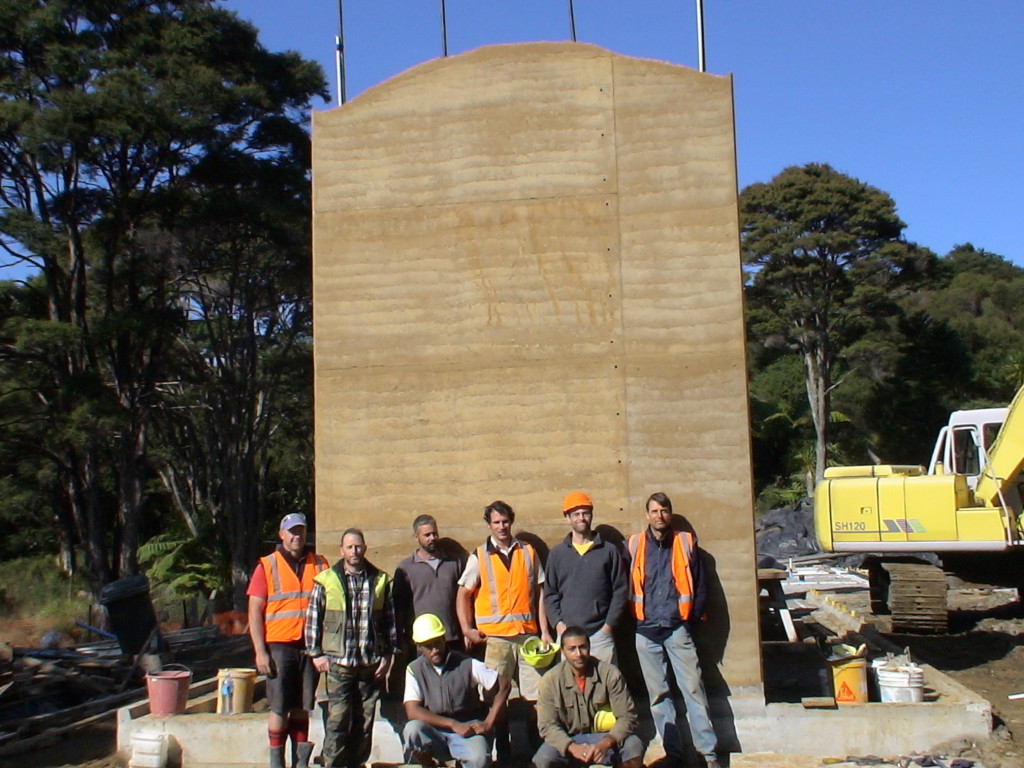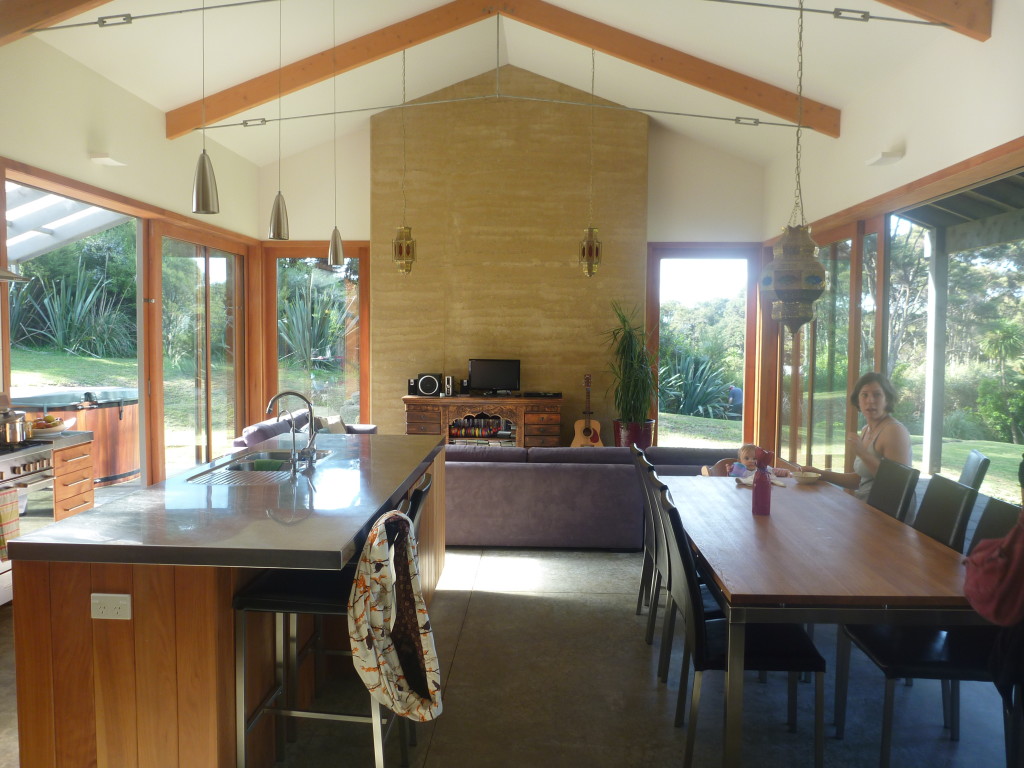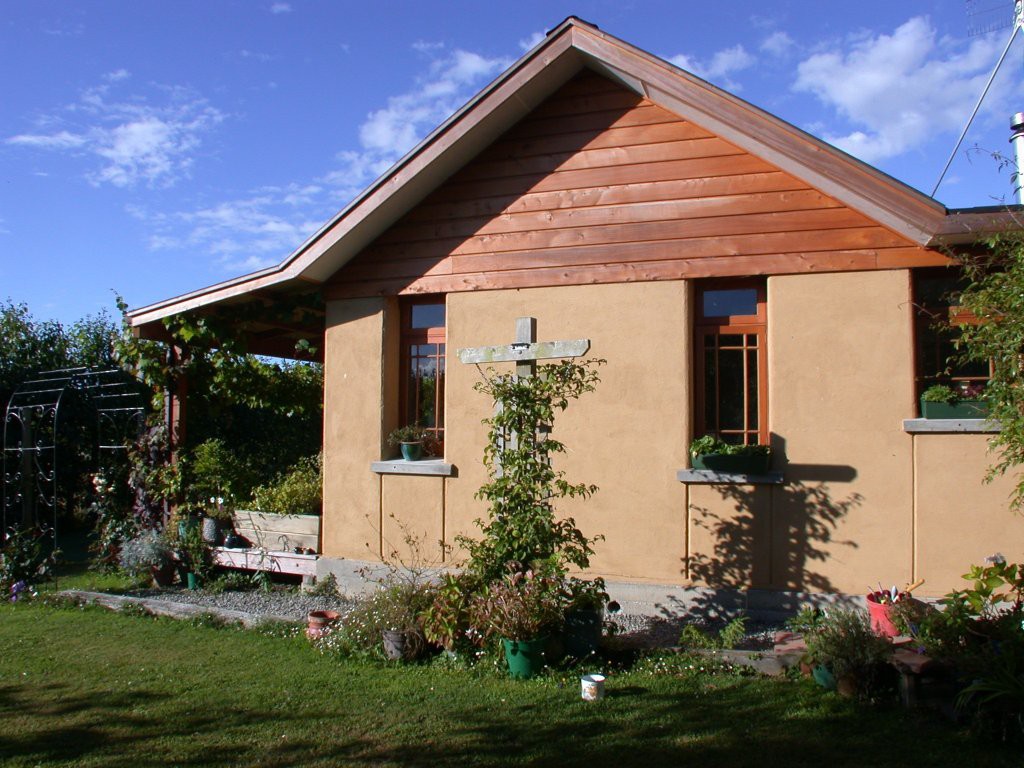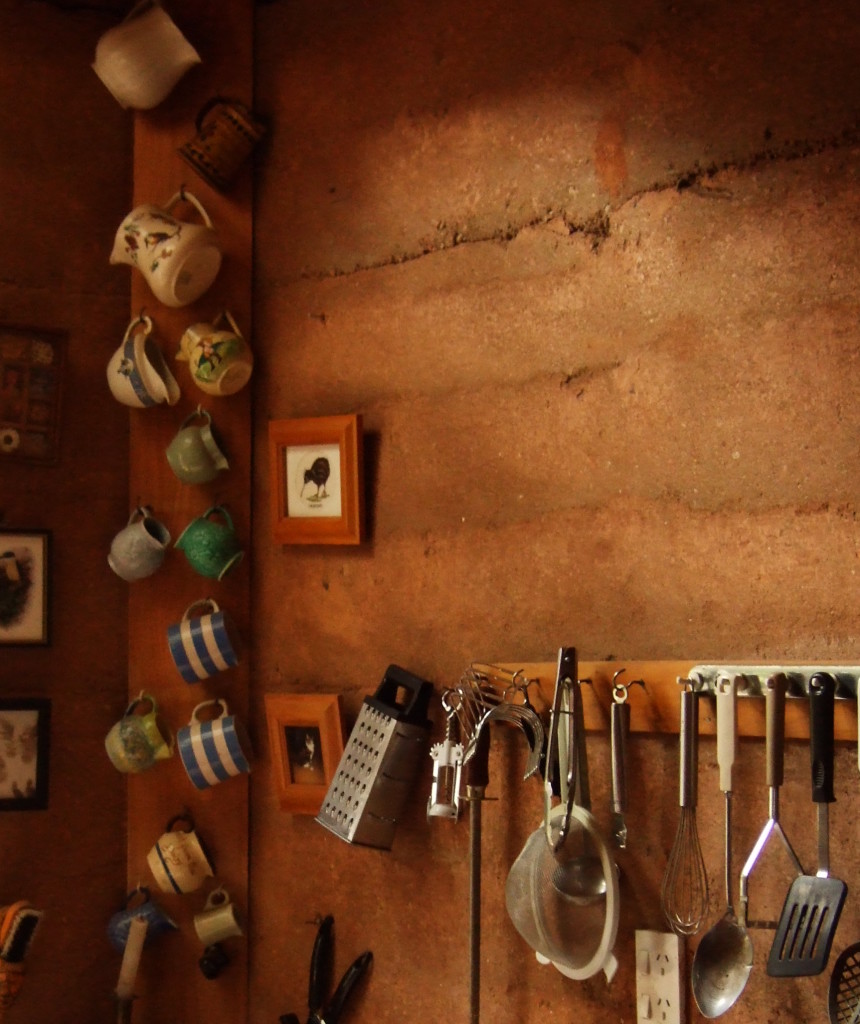Rammed earth (or pise) is an ancient technique that has been dated back to at least 7000 BC in Pakistan. It has been used in many structures around the world, most notably in parts of the Great Wall of China. Although most earth buildings are single or two-storied, a five-storey hotel was recently completed in Corralben, Australia.
Rammed earth walls are formed from soil that is just damp enough to hold together. The soil gets tamped between shutters with manual or pneumatic rammers. The mix is dry enough that once the material is rammed into place and a wall panel completed, the shuttering can be removed immediately.
Rammed earth walls are limited to the shapes that can be built with removable shuttering, so the building should be designed to make practical and effective use of the available shuttering.
The walls are often left as they are, “off the form,” and can reveal a natural-looking strata pattern from the ramming process.
Consistent workmanship is critical for both the appearance and the strength of rammed earth walls, so site work has to be of high quality – an area of wall that is not mixed or rammed correctly can ruin a whole panel.
One difficulty with the rammed earth method is that strict limits have to be placed on shrinkage to eliminate cracking. Sandy and gravelly material will have to be added to a lot of soils to reduce shrinkage. Pre-construction tests for shrinkage and the appropriate limits are detailed in NZS 4298, which also outlines compression and durability tests, and a simple on-site test for moisture content.
Often cement or hydrated lime is added to improve durability, but many successful structures have been built using suitable soils without such additives. A sandy crumbly soil (with a clay content around 15-30%) is best, as it is easily worked and has minimal shrinkage.
The shuttering is best designed so that whole wall panels can be built in one go, thus eliminating joints within panels as much as possible.





[…] Often cement or hydrated lime is added to improve durability, but many successful structures have been built using suitable soils without such additives. A sandy crumbly soil (with a clay content around 15-30%) is best, as it is easily worked and has minimal shrinkage. (ref) […]